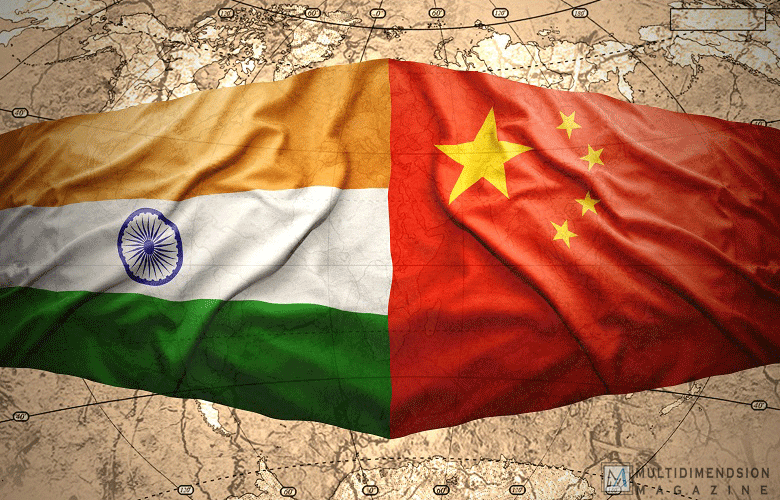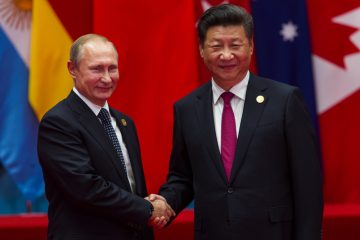Written By: D P Satish
New Delhi, India
Photo: Shutterstock
“India is not only our closest friend, it is our largest trading partner”. With those words, Maldives’ newly elected President Ibrahim Solih shut the door on a bitter past with its closest and biggest neighbor, promising to respect India’s “red lines” that his predecessor Abdulla Yameen had transgressed by his dalliance with China.
Yameen was widely expected to win the September election since he had jailed or exiled his political rivals, suborned the judiciary and reportedly, packed the Election Commission with his supporters. As it turned out, he lost with a staggering 58% voting to throw him out of office.
There was relief in the corridors of New Delhi’s South Block which houses the offices of the prime minister, the foreign and defence ministries. Yameen’s ouster had, at least for now, defused the challenge posed by China’s growing influence over the Maldivian president, the big-ticket infrastructure projects won by Chinese firms and reports that it was getting a naval base there (the Maldives is about 1300 km from India).
But Maldives was not the only blip on the radar of India’s Ministry of External Affairs (MEA) in 2018. The abrupt dismissal of Sri Lankan Prime Minister Ranil Wickremesinghe by President Maithripala Sirisena and the appointment of former president Mahinda Rajapaksa to that post left the MEA dumbfounded. A little over three years ago, Sirisena had defeated Rajapaksa in the elections with India accused of conniving to help bring him down. Why? Because he had got too close to the Chinese, taking their money and giving them Hambantota port on India’s doorstep because he couldn’t pay them back. Sounds familiar.
But with Rajapaksa assuming office, Sri Lanka descended into constitutional chaos with incumbent Prime Minister Wickremesinghe refusing to step down. Adding to South Block’s anxieties, the Chinese envoy was the first to call on Rajapaksa. India held back from endorsing the change, so did the West.
It’s important to note that India had backed Rajapaksa to the hilt as he doggedly stepped up his fight against the Tamil Tigers (LTTE) a decade ago. While unable to satisfy Rajapaksa’s demands for arms and ammunition, (it would have displeased the Tamil parties in former prime minister Manmohan Singh’s coalition government), India provided every other support including reportedly money, intelligence and diplomatic aid.
But post his victory against the Tamil Tigers, Rajapaksa threw open the doors to China. He had valid reasons. India lacked the money to fund Sri Lanka’s reconstruction, its political and bureaucratic elite was slow to respond to his demands to get development moving. Then there was the fact that Manmohan Singh was hostage to the anti- Lanka hostility of the Tamil parties in the Indian state of Tamil Nadu.
So the Chinese moved in. They had plenty of money, projects were cleared expeditiously and Chinese labour was most efficient in getting big-ticket infrastructures such as ports and an airport in Rajapaksa’s hometown of Hambantota executed on time. India which has ancient cultural ties with Sri Lanka was restricted to helping rebuild the war-ravaged north and eastern provinces. The big-ticket projects which it bagged faced several issues at the execution level, frustrating India.
But Rajapaksa’s roaring business with the Chinese was also causing concern within the country. Activist and opposition leaders warned that he was leading the country into a debt trap. In the 2015 elections, he suffered a shock defeat at the hands of joint opposition led by former President and his onetime mentor Chandrika Bandaranaike Kumaratunga and United National Party (UNP) chief Ranil Wickremesinghe.
A stunned Rajapaksa had blamed India’s external intelligence agency Research & Analysis Wing (R&AW) for his ouster. With his exit, India was back in business but the Sirisena- Wickremesinghe combine could not deliver on its poll promises including rapid growth. China which was forced to keep a low profile for some time returned to Island in early 2017 with more promises of investment.
Rajapaksa’s return to power albeit as prime minister and not president as he would have wanted, was a political coup triggered ironically by his rival Sirisena, who could not get on with Wickeramasinghe. It appeared Colombo was once again slipping out of India’s hands.
But the political drama lasted only 51 days. A resilient opposition, vigilant civil society and a section of the Sri Lankan media stood up to Rajapaksa and Sirisena, demanding the reinstatement of the old government. Sri Lanka’s Supreme Court rose to the occasion terming Sirisena’s action of making Rajapaksa prime minister as unconstitutional. Left with no option, Sirisena had to acquiesce to Wickremesinghe.
Senior Cabinet minister and former cricketer Arjuna Ranatunga commented that “Ranil Wickremesinghe has proved his leadership by forcing Rajapaksa to exit. India is our oldest and closest neighbor, a regional superpower. Certainly, we want to improve our ties with India. Sri Lanka will retain and guard its sovereignty. But we will focus on economic development and India will surely be a big partner in it”.
Ranatunga could have been echoing Maldivian President Solih’s sentiments. With a pro-India Ranil in the saddle, India is gearing up to the challenges ahead: it is focusing on the Chinese built and unused Mattala Rajapaksa airport near Hambantota, an LNG facility near Colombo and a storage facility in the eastern port town of Trincomalee. For now, at least, India has the upper hand over China in Sri Lanka.
But there are immense obstacles ahead. India has given the Maldives $1.4 bn in financial assistance to tide over its immediate requirements. It was not lost on observers that the money or part of it, would probably go to repay some of the loans China had the advanced Maldives. In the medium or long term, it’s unlikely India would be able to continue giving the Maldives money. It lacks China’s deep pockets. India has indicated it has no objection to China’s infrastructure projects so long as they are transparent and do not force that country into a debt trap. It’s also indicated that China has a role in the Maldives so long as India’s “red lines” are respected (read no naval base or naval facility).
India is expected to follow the same policy with regard to Sri Lanka. India cannot compete with Beijing in giving money. It can provide some financial aid, but is better equipped in terms of helping build capacity in that country, train its people, and provide scholarships for its students and so on.
South Block has no doubts that the gains in the Maldives and Sri Lanka could be short-lived. China rejects the view of the Indian Ocean as India’s backyard, a view defined by its dependence on the Indian Ocean for its energy supplies. Maritime analysts say the only navy capable of posing a threat to China’s energy flows is the Indian Navy, so expect Beijing to step up its involvement in the Indian Ocean Region.
There are no long-term winners and losers in this game. There are tactical victories and retreats with the cycle repeating itself until some sort of equilibrium is achieved between India and China.
(Views are personal)
(Author is a Senior Editor, CNN News18/Network18, India’s largest media house. He divides his time between New Delhi and Bengaluru. He is a keen observer of Sri Lanka)




